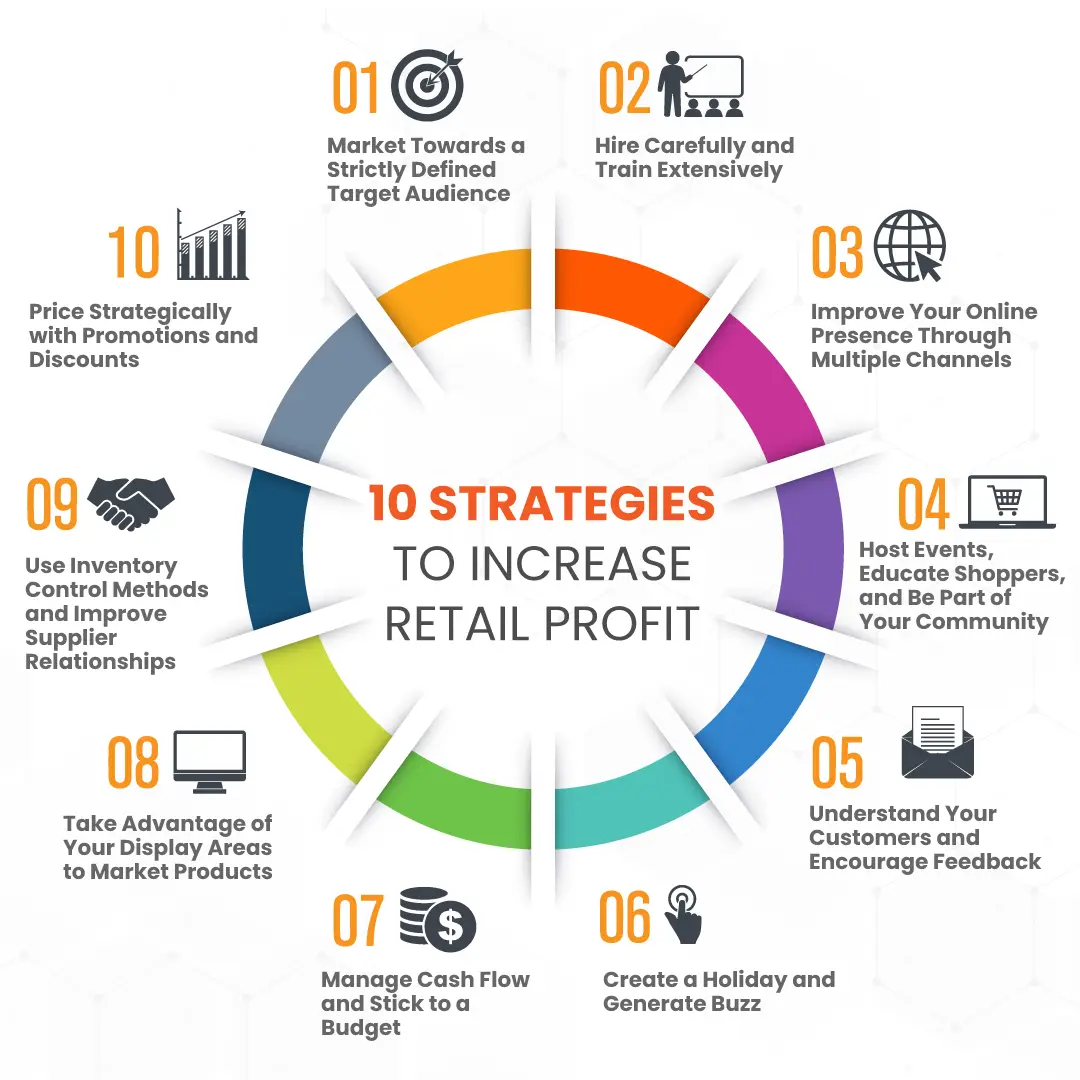One of the biggest questions store owners ask is: “What is a good retail profit margin?” After all, understanding retail profit is key to making smarter business decisions and boosting revenue.
In this guide, we’ll explain what retail profit means, break down industry benchmarks, and show you practical strategies to improve your margins. Let’s dive into the numbers and tactics that make retail work, whether you’re a seasoned professional or just becoming a retailer.
💡 Key Takeaways:
- Retail profit refers to the earnings a store makes after subtracting the cost of goods sold and operating expenses from revenue.
- A good retail profit margin varies by industry, with most falling between 20-50% for gross profit margins.
- Strategies like niche marketing, smart pricing, and choosing the right POS system can boost profits.
What Is Retail Profit?
Retail profit is the financial gain a store makes after covering the cost of the products it sells and other operational expenses. It’s what remains after subtracting your costs from your revenue.
The retail profit metric is crucial for assessing the financial health and sustainability of a retail operation.
Types of Retail Profit
- Gross Profit: Revenue minus cost of goods sold (COGS)
- Operating Profit: Gross profit minus operating expenses (rent, salaries, utilities)
- Net Profit: Operatinng profit minus taxes and interest
- Markup Profit: Profit made through pricing markup over wholesale
What Is a Good Retail Profit Margin?
The average gross profit margin in retail typically ranges from 20% to 50%, depending on the type of store. For example, grocery stores may operate with a slim margin of around 20%, while apparel retailers often achieve 50% or higher.
Industry | Average Gross Profit Margin |
Grocery | 20-25% |
Apparel | 50-60% |
Electronics | 25-30% |
Furniture/Home Goods | 35-40% |
Remember!
Retail trends like trade spend and promotions also impact margins.
How Much Do Retail Stores Make?
Retail income varies widely depending on store size and format:
- Small local store: Average annual revenue is $150,000-$500,000. Net profit can be as low as 2-5%.
- Mid-sized retail chain: Revenue ranges from $5-20 million per year. Profit margins tend to hover around 5-10%.
- Online retail business: Lower overhead often means higher margins, averaging 10-20% net profit.
Factors That Influence Retail Profit Margins
Several operational and market factors directly impact your profitability:
- Seasonal fluctuations: Holidays and seasonal trends can create profit spikes or slumps.
- Rent and location costs: Higher rent can reduce margins unless offset by higher sales volume.
- Staffing and wages: Labor costs need to be optimized for efficiency.
- Inventory management: Overstocking, dead stock, and stockouts all affect profits.
- Pricing strategy: Poor pricing can erode profit margins.
- Product mix and assortment: High-margin items boost profits.
10 Strategies to Increase Retail Profit Margins

Improving profitability doesn’t have to be complicated. Here are 10 strategies to boost your retail profit margins:
1. Niche Marketing for Higher Profit Margins
Targeting a specific audience helps you charge premium prices and reduce competition. By focusing on a niche market, you can also build stronger brand loyalty and reduce the need for broad advertising campaigns.
Your retail point of sale system can be your guide during this process through sales reporting, helping you to identify your money-making products and strategies.
2. Staff Training & Customer Service
Well-trained staff increase average transaction value and reduce costly errors. Strong customer service also enhances the shopping experience and encourages repeat business.
3. Get Online and Improve Your Social Presence
Starting an e-commerce store in addition to your brick and mortar location might be worthwhile.
Expanding to e-commerce increases sales channels without much overhead. Social media platforms can also drive traffic, foster engagement, and promote brand visibility.
4. Host Events and Get Outside
Experiential retail is a surefire way to get people into your stores and build profit margins. In-store or community events can boost foot traffic and build loyalty. These events also create memorable experiences that encourage word-of-mouth marketing.
5. Understand Your Customers
Use POS data and other forms of retail sales analytics to tailor offerings to what your customers actually want. Customer insights help you stock more effectively, personalize promotions, and anticipate trends.
6. Create a Holiday and Generate Buzz
Seasonal promotions and unique in-store holidays increase urgency to buy. These themed events can also differentiate your store, increase awareness of your brand, and attract new shoppers.
7. Cash Management & Sound Financial Records
Good bookkeeping ensures you’re not losing profits to unnoticed expenses. Accurate financial records also support better planning and easier tax reporting.
8. Take Advantage of Your Display Areas
Strategic product placement boosts impulse purchases and sales volume. Well-designed displays can guide customer flow and highlight high-margin items.
POS marketing is a great way to pad sales with last-minute impulse purchases. Stack the area around your queue and POS terminal with small products that your customers may have forgotten while shopping.
9. Control Inventory and Supplier Relationships
Tight inventory control, strategic inventory valuation, and good supplier deals protect margins. Strong supplier relationships also ensure timely deliveries and may offer better pricing terms.
10. Price Strategically with Promotions and Discounts
Use price optimization software, tools, and strategies to balance volume with profit. Well-timed promotions can help clear inventory while still protecting your margins.
Tracking retail key performance indicators (KPIs) is one way to price more strategically.

Improve Retail Profit Margins With KORONA POS
KORONA POS helps you boost your store peformance through key retail metrics, automated inventory tracking, state-of-the-art POS technology, and detailed sales reports. Our system offers deep insights into your business operations, giving you the tools to make smarter decisions and increase your profit margins.

Speak with a product specialist to learn exactly what you need and how we can help.
Frequently Asked Questions About Retail Profits
Is a 7% profit margin good?
A 7% net profit margin is solid for most retail businesses, especially brick-and-mortar stores. To boost profit, learn more about initial markup and how it affects final profit.
How do you calculate the profit markup percentage?
To calculate profit markup percentage, you need an item’s selling price and cost price. The formula is: (Selling Price – Cost Price) / Cost Price * 100
How do you calculate profit margin?
To calculate profit margin, divide your profit by your revenue and multiply by 100 to express it as a percentage. The formula is: Markup ÷ Selling Price of Product × 100












